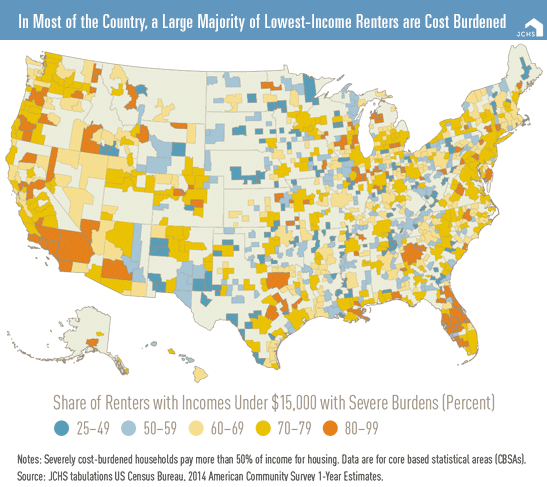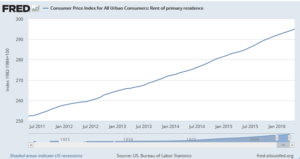Thanks to the Federal Reserve and Janet Yellen, housing affordability is gradually becoming a major problem for millions of Americans all over the country. Due to the skyrocketing costs of renting, millions of renters spend at least half of their income toward housing.
According to a new annual State of the Nation’s Housing Report from the Joint Center for Housing Studies of Harvard University, 11 million people dedicated at least half of their earnings to pay the rent. This incredible figure is now a record high. It doesn’t end there.
Researchers note that 21.3 million people are spending one-third or more of their paycheck to pay the rent, which is also a record high. As renting costs grow faster than wages – the average renter earns about $35,000 per year – it’s becoming harder to pay the rent.

Simply put: the rent is too damn high!
Here is one excerpt from the report:
“Cost burdens are nearly universal among the nation’s lowest-income households. Federal assistance reaches only a quarter of those who qualify, leaving nearly 14 million households to find housing in the private market where low-cost units are increasingly scarce. Low -income households with cost burdens face higher rates of housing instability, more often settle for poor-quality housing, and have to sacrifice other needs—including basic nutrition, and safety—to pay for their housing. These conditions have serious long -term consequences, particularly for children’s future achievement. ‘And compounding these challenges,’ added Daniel McCue, a senior research associate at the Joint Center, ‘residential segregation by income has increased. Between 2000 and 2014, the number of people living in neighborhoods of concentrated poverty more than doubled to 13.7 million.'”
Interestingly enough, renters are sitting at both ends of the income spectrum. In 2015, half of new renters earned less than $25,000, while high-income households became the biggest segment of new renters for the past three years.

Another non-story from Mr. Moran. In 1974, right out of high school, living in Southern California, working a minimum wage job, it took 38 percent of my monthly income to pay my rent.
It all depends on where you live. Today living in MT my rent is covered by 21 percent of my monthly income.